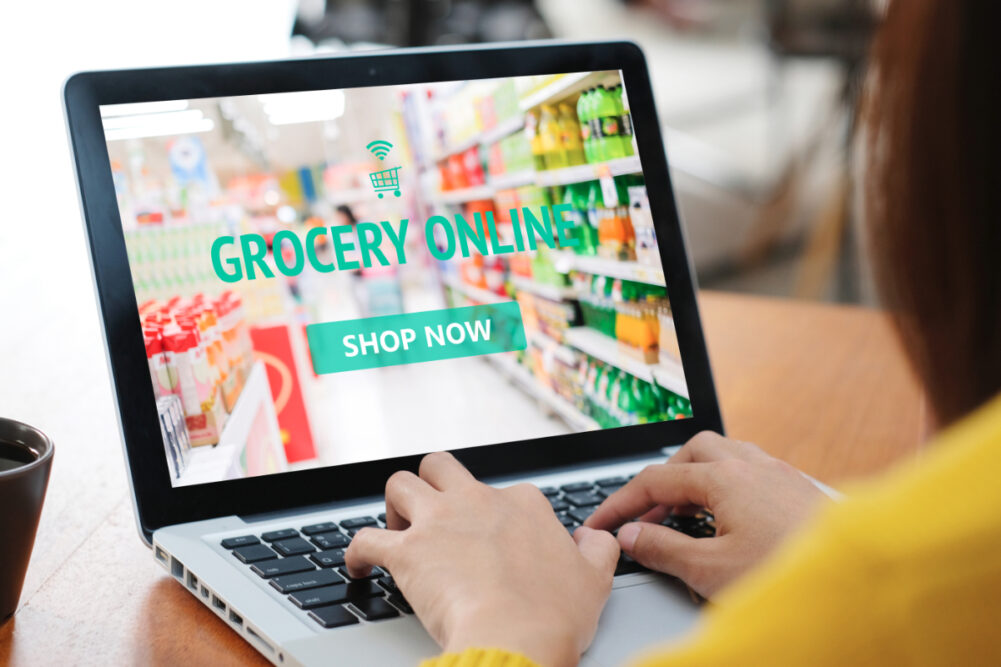 E-commerce sales in the United States are surging. The coronavirus (COVID-19) has pushed consumers to embrace digital retailing, and the shift taking place today is most likely permanent. The question is, where does food and beverage fit in this emerging environment?
E-commerce sales in the United States are surging. The coronavirus (COVID-19) has pushed consumers to embrace digital retailing, and the shift taking place today is most likely permanent. The question is, where does food and beverage fit in this emerging environment?
The volume of e-commerce transactions in the United States for the second quarter of calendar 2020 is remarkable. Sales during the period were estimated at $211.5 billion, up 32% when compared to the first quarter of 2020 and up 45% when compared to the same period during 2019, according to the Census Bureau of the Department of Commerce. E-commerce made up 16% of total retail sales of $1.3 trillion during the period. For context, during the first quarter of 2020 e-commerce was 12% of total retail sales and 11% of retail sales during the second quarter of 2019.
Consumer demand for digital shopping showed up impressively in the quarterly earnings of Walmart, Inc. and Target Corp. Walmart e-commerce sales shot up 97% during the quarter as shoppers shifted away from visiting stores to delivery and click-and-collect. Target Corp.’s results were equally remarkable. Digital comparable store sales spiked nearly 200% during the quarter. Breaking down digital sales by channel mix, same-day services experienced 279% comp growth, drive-up grew 734%, and sales fulfilled by the retailer’s Shipt service were up more than 350%.
Amazon’s performance was as equally impressive as Target and Walmart. The company said at the end of July that quarterly online grocery sales had jumped 200% year over year and that demand was still “super high.” Management attributed the growth to Prime members who are shopping more often.
The challenge facing food manufacturers is understanding the sustainability of the current growth trends. Data from The NPD Group shows that as of May 2020 40% of grocery shoppers had ordered edible groceries online, and more people were trying services like delivery or pickup.
Still, not all indicators were promising for the direction of online grocery shopping. The TABS Annual Food and Beverage Consumables survey released in August by the consultancy TABS Analytics shows grocery e-commerce only saw a slight uptick in sales from new users. While online grocery transactions increased 15% over the past year, the survey indicates the increased sales were more frequent purchases from existing buyers.
Today, much of the power in food and beverage e-commerce is consolidated between Amazon, Walmart, Target, Kroger, Costco and other businesses like Instacart, Fresh Direct and NetGrocer. But the TABS survey raises questions over whether these models are ideal for food and beverage sales.
It may be one of the reasons Nestle, Unilever, PepsiCo, Perdue Farms, Impossible Foods, Beyond Meat and many other food and beverage companies are experimenting with direct-to-consumer models. The benefits of direct-to-consumer are greater efficiencies, better margins, and the ability to capture consumer data and personalize the user’s experience with brands. A downside is selection may be limited depending on the company.
Retailers will not stop trying to crack the code to grow digital food and beverage sales and reach the category’s significant potential. But no one should be under any illusion the race is close to being over. A massive opportunity still awaits the companies that can make consumers feel as comfortable shopping for food online as they do in brick-and-mortar stores.





